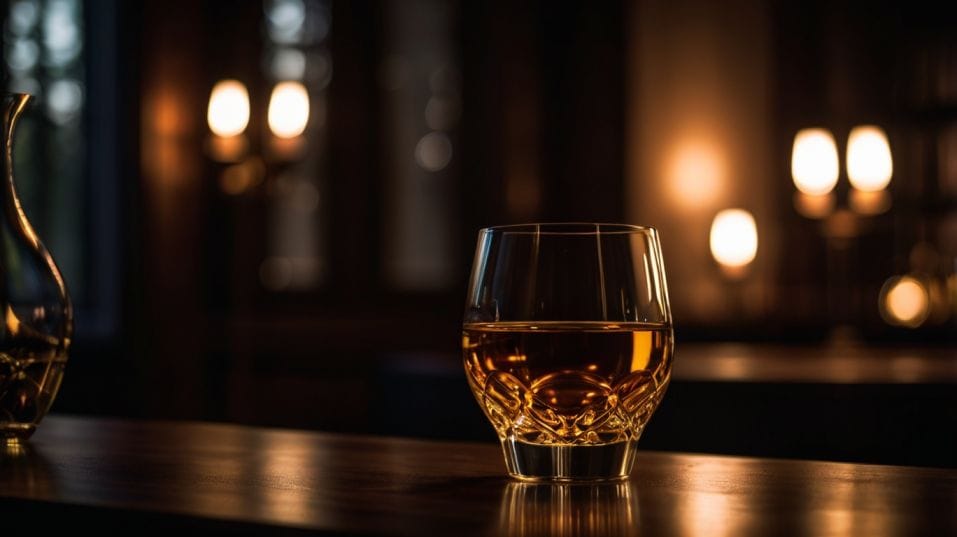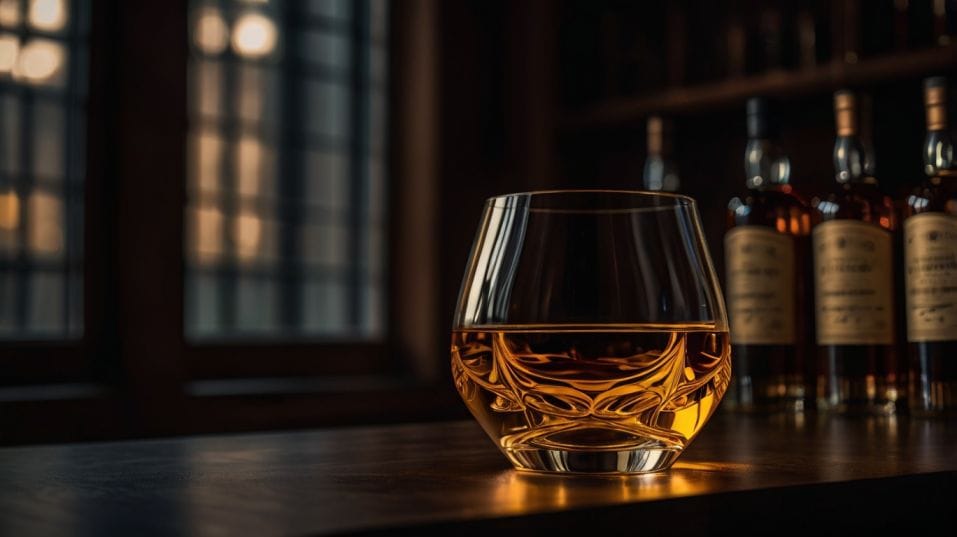What Makes a Whiskey Glass ‘Premium’?
Unlock richer whiskey flavor with the right glass. Learn what makes a whiskey glass ‘premium’—and how it transforms every pour.

Ever wonder why the same whiskey tastes better in one glass than another? It’s not your imagination—it’s your palate evolving. As you get serious about whiskey, your glass should evolve too.
A premium whiskey glass isn’t just fancy—it’s functional. It shapes aroma, directs flavor, and sharpens your senses.
If you’re still pouring into whatever’s clean, you’re missing the full story. Let’s explore what makes a whiskey glass premium—and why it matters every time you pour.
Shape Is the Foundation
Every whiskey glass tells the whiskey what to do. How fast it evaporates. Where the aroma travels. How the spirit hits your tongue. A premium glass doesn’t just hold liquid—it sculpts the tasting experience.
The Tulip Shape
The tulip shape is the gold standard for good reason. With a wider bowl and a narrowing rim, it concentrates aroma right where it counts—at the nose.
That flare at the base allows the whiskey to breathe, while the taper captures the volatile compounds and channels them toward you.
It’s the difference between catching faint notes of citrus and completely missing them. For tasting, nosing, or evaluating a new bottle, that shape becomes a critical tool.

Flat-Rimmed Rocks Glasses
Flat-rimmed rocks glasses, on the other hand, were built for cocktails—not complexity. They spread aroma out into the room and offer no control over temperature or nose feel.
You might still use them for casual pours or when adding ice, but if you're tasting whiskey neat, they’re working against you.
Snifter-Like Shapes
Snifter-like shapes—think Glencairn, Copita, or the NEAT glass—offer small variations on that tulip foundation.
Each has strengths depending on how you like to explore aroma, mouthfeel, or proof. But the consistent thread? They were designed for whiskey, not just to hold it.
Aroma: Where Flavor Starts
Up to 80% of what you “taste” in whiskey actually happens through smell. That’s why the shape of a glass isn’t some aesthetic detail—it’s central to flavor.
When you nose a whiskey, the volatile compounds rising from the surface carry crucial signals: fruit, grain, oak, char, floral highs, earthy lows.
A good glass lets those compounds evolve. A bad one either overwhelms you with ethanol or loses the subtleties entirely.
Premium glasses are shaped to balance this diffusion. They’ll let the brighter, lighter aromas rise without letting the harsher ethanol dominate the nose.
That’s how you start training your senses to distinguish between sherry influence and charred oak, between orchard fruit and grain sweetness.
The Feel of Real Glass
You can tell when a glass was made to be used, not just looked at. Premium whiskey glasses have a physicality to them—balanced weight, smooth rims, no mold lines or rough lips.
Crystal or Lead-Free Crystal
Crystal or lead-free crystal often shows up in higher-end glassware. It’s not just about clarity or shine (though both help).
Crystal can be shaped thinner without losing strength. That means less material between you and the whiskey. It’s closer to a direct conversation—no heavy rim, no clunky bowl, no distortion of color.
Weight and Presence
Weight also plays a role. A good glass anchors the moment. It slows you down, asks for attention. It’s not heavy for the sake of heft, but it feels intentional.
Thin-walled, lightweight glasses might seem elegant, but if they feel disposable, you’ll treat them that way.
The best glasses hit that sweet spot: elegant, but present. You want to hold it without thinking—and never forget you're holding something worthwhile.
Temperature Control and Surface Area
Premium whiskey glasses help you manage temperature, which subtly shifts flavor. A thicker base slows warming from your hand. That matters if you’re drinking over time or analyzing a pour closely.
Surface Area
Surface area also influences flavor release. A slightly wider bowl gives the whiskey room to open up, softening alcohol sting and letting layers unfold.
Pour too shallow into a narrow glass, and you don’t get the same interaction with oxygen. But go too wide (like some short tumblers), and the aromas disperse before you can catch them.
If you're collecting bottles with varied profiles—peated Scotch, wheated bourbon, single grain Irish—you’ll start noticing how different shapes respond to each. The right glass lets each whiskey speak in its own voice, without shouting or mumbling.
Built for Repetition
If you’re serious about whiskey, you’re not pouring once and walking away. You’re comparing bottles. Exploring variations. Tasting in sequence.
A premium glass helps you stay consistent. It gives you a reference point—same shape, same response, different whiskey.
This is why serious tasters often have a lineup of the same style of glass. It removes one more variable from the equation. You’re no longer wondering how the glass changed the experience. You're tasting the whiskey for what it is.
This isn't about being clinical. It's about being curious, intentional, and tuned in to the details.
The more familiar you get with how whiskey behaves in a particular glass, the more confident you become in identifying flavor, assessing quality, or simply enjoying your collection more fully.
What to Avoid
Premium doesn’t mean trendy. Don’t fall for gimmicks—ultra-wide bases, faceted interiors, double walls. If a glass looks like a conversation piece more than a tasting tool, it probably is. Whiskey doesn’t need performance art.
Skip novelty shapes, heavy branding, and thick-rimmed designs. They tend to prioritize looks over function.
You don’t need logos or laser etching to have a premium experience—you need a glass that disappears and lets the whiskey do the talking.
Final Thoughts
A premium whiskey glass earns that title not through hype, but through design that respects the spirit. It sharpens aroma, controls temperature, feels natural in your hand, and disappears in use. It’s a quiet upgrade with a loud impact.
If you're tasting whiskey to understand it, a good glass makes that process clearer, cleaner, and more rewarding.
So pick a bottle you already know, pour it into a properly shaped glass, and taste it again—this time with attention. Notice what opens up. What lingers longer. What you missed last time.
Start building your tasting gear with intent. Own a glass that pushes your whiskey experience further. Taste with purpose. You’re not just drinking anymore—you’re learning.




